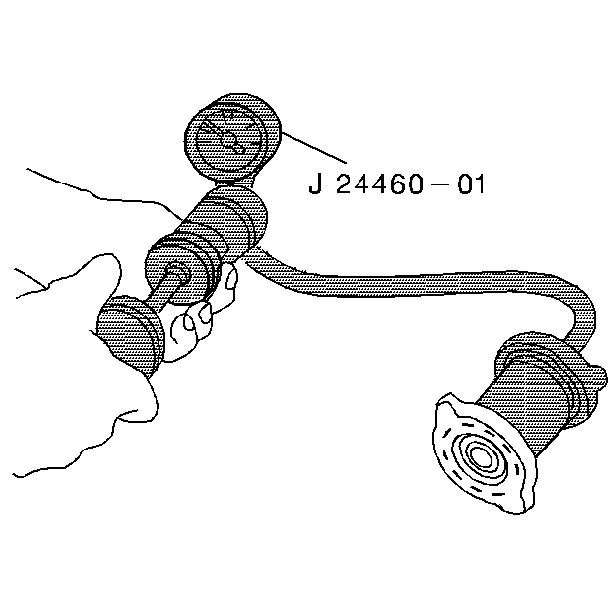For 1990-2009 cars only
Tools Required
| • | J 41336-1 Radiator Cap Test Adapter |
| • | J 41336-2 Radiator Test Adapter |
| • | J 24460-01 Cooling System Tester |
- After the system has cooled, remove the radiator pressure cap.
- Connect the cooling system tester, J 24460-01 , and the adapter, J 41336-2 , to the radiator neck.
- Apply normal system operating pressure. Do not exceed 138 kPa (20 psi).
- The system should hold pressure for about two minutes. Watch the gauge needle for an indication of a leak. Examine all cooling system connections and components, including the radiator and the heater core, for leaking coolant.
- Tighten the hose connections and/or repair as required.
- Test the radiator cap with the J 24460-01 and the J 41336-1 in order to ensure that the cap maintains the correct pressure.
- Slowly apply pressure. If the cap fails to hold 110 kPa (15.6 psi), replace the cap.
Caution: As long as there is pressure in the cooling system, the temperature can be considerably higher than the boiling temperature of the solution in the radiator without causing the solution to boil. Removal of the pressure cap while the engine is hot and pressure is high will cause the solution to boil instantaneously -- possibly with explosive force -- spewing the solution over the engine, fenders and the person removing the cap.
Caution: To avoid being burned, do not remove the radiator cap or surge tank cap while the engine is hot. The cooling system will release scalding fluid and steam under pressure if radiator cap or surge tank cap is removed while the engine and radiator are still hot.

